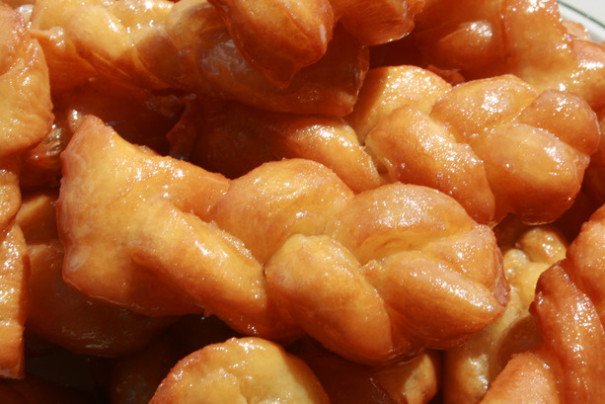
A Sunday Morning Tradition With Murky Origins

A Sunday Morning Tradition With Murky Origins
Koeksister in Bo-Kaap
If ever a morning is hungover, it would be Sunday. Even on the Sundays when the sun shreds the bright blue sky with shards of light—and in Africa that is most of them—there’s something inherently sluggish about the last day of the week. It squints itself into being, stirs slowly and craves something sweet whether the previous night was sour or not.
In Cape Town’s Bo-Kaap, a largely-Muslim area known for it’s postcard-perfect color block houses, the indiscretions of a Saturday night do not often have much to do with alcohol. Still, its Sunday mornings have all the symptoms of someone who had too much, likely a hangover from colonial times when the Malay slaves who were forced to live in the area had probably had enough of the week’s work, and the solutions, too.
The koeksister (pronounced “cook sister,” or, if you are after authenticity, harden your accent and say “koesiester”), was born in those slave kitchens. It is essentially is an oblong-shaped spiced doughnut, subtlety flavored with cinnamon, cardamom, ginger, and aniseed, smothered in syrup and snowballed in desiccated coconut. It has the texture of a cake—but not a chiffon cake, a canvas cake, in curtain terms—and is ubiquitously served warm and with a pot of tea on a Sunday morning. If you visited the Bo-Kaap then, you’d think it was just a giant bakery.
“I make koesiesters on a Sunday morning, the neighbor makes koesiesters on a Sunday morning, the lady on ‘leventh Avenue makes koesiesters on a Sunday morning, the lady on 15th Avenue koesiesters on a Sunday morning—you know why?” Faldela Tolker, a home cook who opens her doors to tourists asked. “Because the bakery is closed and koesiesters have to be eaten fresh. It’s the only thing we eat on a Sunday morning. Then we wait for lunch.”
The family affair that follows the koesiesters can extend anywhere from brunch to supper and is comprised of multiple courses, from deep-fried samosas to deep-fried desserts and, if you can stomach it, more koesiesters. There’s no point having any leftovers; they just won’t taste the same on another day.
However, if you are a white, Afrikaans-speaking South African, koeksisters don’t taste like that at all.
To them the koeksister (pronounced cooKsister, with a pronounced middle k) descends from their Dutch ancestry and is a slender plaited pastry, soaked in so much syrup that on biting into it, the sweetness squirts into your mouth. Despite the seeming attraction to the cutting ‘k’ sound, there is no coconut on their version.
The Afrikaans claim the pastry as part of their heritage, but like so much about South Africa’s past, it is murky. The closest to clarity can probably be found in understanding that the colonizers and those they forced to become the colonized lived in closer quarters than either are comfortable with admitting and the cultures crossed. They shared a language (Afrikaans was first written in Arabic script by Malays) and sometimes a bed (the many mixed-race people in the country came from somewhere) and maybe, on some Sunday mornings, a breakfast.